Adventure Travel
What Are the Challenges of Adventure Tourism?
The challenges of adventure tourism are diverse and multifaceted. They range from the lack of a centralized safety standard to the impact on local communities. This article discusses some of the main challenges faced by adventure tourism. It also explores the issues surrounding attitude towards adventure tourism. In addition to these, it also offers solutions to some of the problems identified in the research.
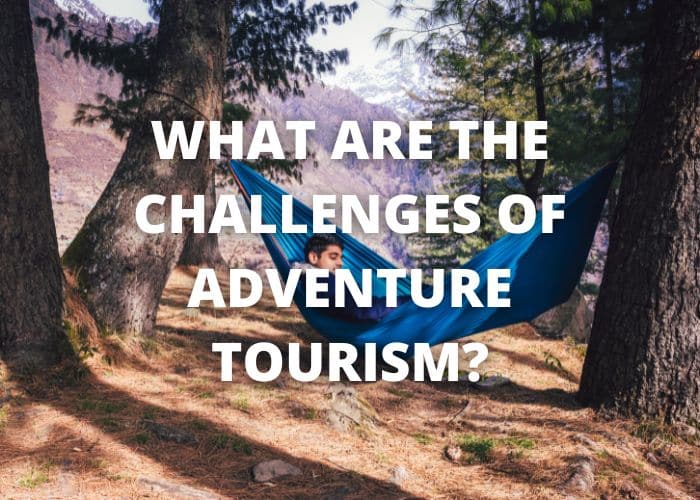
Lack of a national adventure travel policy
Adventure travel is an increasingly popular genre of tourism. It involves travel involving perceived risk, physical exertion, and cultural exchange. In recent decades, the number of people taking part in adventure travel has grown significantly. However, a lack of a national policy governing the industry makes it difficult to quantify its size. According to the Adventure Travel Trade Association, adventure travel includes “any type of tourism activity that involves physical activity, cultural exchange, or engagement with nature.”
Lack of a centralized safety standard
One of the most important aspects of adventure tourism is safety. In most cases, adventure tours are run by unauthorized operators who do not follow any safety standards. This poses a risk to both tourists and tour operators. The government needs to regulate the industry and ensure that operators have adequate insurance and emergency medical care. Many of these activities are conducted in remote locations with few or no hospitals nearby.
Adventure tourism is often used as a form of recreation and can provide a quick escape from the rigours of daily life. It can also be a healthy way to find balance in life. However, it should never lead to a tragic incident. Unfortunately, these unfortunate events usually happen due to a chain of harmless events leading to a point of no return.
In the meanwhile, there is a need to research the effectiveness of various tourism recovery strategies and resetting the new normal of the industry. This research could also be used to explore the role of resilience in the industry and how to build resilience in a way that will allow it to operate responsibly.
As adventure tourism is a risky business, a crisis can be devastating to the business. It can affect the image of a destination and decrease the number of visitors. For this reason, it is essential to prepare for potential emergencies and implement a crisis management plan. By planning ahead, you can minimise your losses and maximize your opportunity.
While the government is encouraging the growth of adventure tourism, there are still many challenges. One of the biggest is the lack of adequate infrastructure for adventure tourism. This is particularly difficult in remote locations with limited connectivity. Therefore, many operators are not fully equipped to meet the needs of tourists.
There are several organisations that work to help you in crisis situations. The World Travel & Tourism Council, the Pacific Asia Travel Association, the Latin American Travel Association, and the African Travel & Tourism Association all have resources to help you out. Another helpful resource is the Adventure Travel Trade Association. This group provides extensive information about the adventure tourism industry. It also hosts information for tour operators and travellers.
Impacts on the local community
Adventure tourism has both positive and negative impacts on local communities. While it may be profitable for some businesses, it can also cause significant economic losses for some local communities. Adventure tourism can contribute to the conservation of natural areas while also benefiting local communities. Here are some examples of how adventure tourism can benefit communities.
A community that has an active tourism industry can expect positive social and economic impacts from the development of tourism. Local people often benefit from tourism by purchasing local products and souvenirs and supporting local businesses. It can also help reduce over-reliance on natural resources. However, tourism development can also have negative effects on the local community and the environment. This is because construction activities, pollution, and tourism activities can affect local communities.
Ecotourism is an increasingly popular method of adventure tourism. It involves using renewable resources and providing educational opportunities for the local community. Some ecotourist facilities use biodegradable shampoos and re-use bath towels. By using these sustainable methods, tourists can enjoy a guilt-free holiday without causing unnecessary harm to the environment.
Adventure tourism also creates jobs in local communities, which benefits local businesses and infrastructure. It also helps local communities thrive because it does not depend on seasonality, which means adventure tourism activities can be enjoyed year-round. The positive effects of adventure tourism can also help local communities become more dependent on adventure tourism and less dependent on other types of tourism.
In addition to providing jobs, adventure tourism also provides a positive image for local communities. It promotes education and raises morale, and it can help local communities attract investors. A healthy local economy will also lead to more investments. For this reason, it is essential to invest in local businesses.
Creating a healthy tourism environment requires careful planning and community participation. For example, local residents should be involved in infrastructure development and risk management. They should also be involved in the process of setting expectations for visitors.
Attitudes towards adventure tourism
Although adventure tourism is not a sustainable form of tourism, it does have some positive aspects. For example, it is a way for people to get away from technology and meet new people. It also allows people to relax and rely on their own knowledge and instincts. This can help to foster pro-environmental attitudes.
The research examined the influence of various independent variables on the attitudes of participants. It found that the majority of spectators were white and female, with an average age of 38. The study’s methodology included descriptive analysis, principle axis factor analysis with varimax rotation, and multiple analysis of variance. It is possible to predict whether a person will engage in a particular activity based on their level of risk perception.
Attitudes towards adventure travel are evolving in response to changes in consumer behavior. According to new research by ATTA and East Carolina University, consumers are increasingly seeking transformative experiences. This new concept is driving change across industries, including the travel industry. In fact, a recent study found that most adventure travelers seek experiences that will leave a lasting impression.
In addition to research on the physical aspects of adventure travel, there is also a growing body of literature regarding attitudes towards risk in this sector. Researchers have found that risk is a significant motivator in people’s decision to take part in these activities. In addition, people’s trust in the guides and advanced skills mitigate the risks associated with these experiences.
Researchers have also found that adventure guides report higher levels of well-being and a higher sense of environmental responsibility as a result of their jobs. Furthermore, they reported that they shared their love of nature with their clients. This research adds to emerging theoretical models on adventure guide wellbeing and identifies a range of practices that are vital for the sustainability of the industry.
Adventure Travel
The Best Places For Adventure Travel in Bali
There are several places in Bali where you can enjoy adventure sports. Some of these activities require a high level of activity such as mountain climbing or river rafting. Other activities include rappelling, jumping off waterfalls, or ziplining. However, there are only a handful of good climbing tours in Bali.
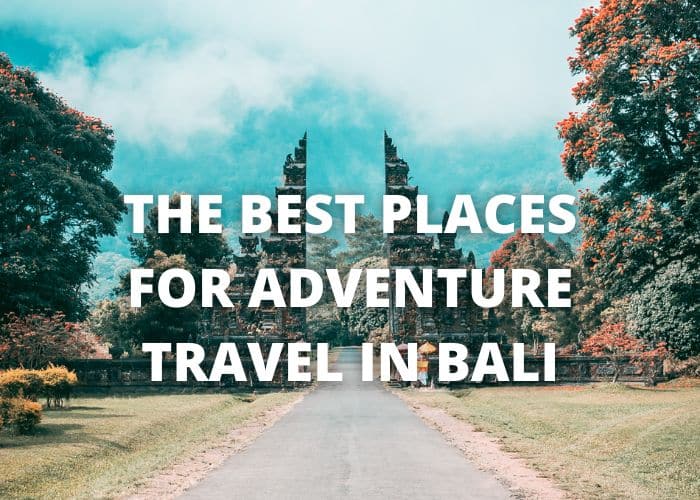
Mount Batur
If you’re looking for adventure, Mount Batur is a great place to start. You can hike to the top in as little as two hours, and the sunrise views are amazing. If you’re not sure you’re up for the challenge, you can hire a local guide.
If you’re interested in experiencing the true height of Mount Batur, it’s best to do it during the dry season. Heavy rain can make the climb a difficult and unpleasant experience. Also, the weather in Mount Batur is often cooler than elsewhere in Bali, and temperatures can drop as low as 10 degrees Celsius, or 50 degrees Fahrenheit.
To get the most out of your Mount Batur adventure, it’s important to hire a local guide to guide you to the summit. If you don’t hire a guide, you run the risk of being abused verbally and physically by unscrupulous locals. The Bali government needs to intervene to prevent the exploitation of adventure-seekers without guides.
One of the best places for adventure travel in Bali is Mount Batur, an active volcano that sits between two ancient calderas. One of the calderas contains Lake Batur, Bali’s largest lake. The mountain is also home to the most sacred Hindu temple, Pura Ulun Danu Batur. While this trek is not difficult or long, you will need a guide because of its sacred status. However, you can hire a guide from any location in Bali.
River rafting
River rafting is a great way to enjoy the beauty of Bali and the surrounding landscapes. There are two main rivers in Bali that are ideal for rafting: the Ayung River outside of Ubud and the Telaga Waja River near Mount Agung. While these two rivers are considered moderate in difficulty, they are still suitable for adrenaline junkies and beginners alike.
Getting a river rafting tour in Bali is an affordable way to experience the beauty of the surrounding nature and enjoy the thrill of adventure travel. There are several companies offering this tour and the ongoing competition among operators keeps prices low year round. Prices vary based on the choice of river, the mode of transportation and optional add-ons like photo packages.
The Melangit River in Bali is another excellent choice for rafting in Bali. This river features class three and four rapids and is recommended for intermediate rafters. It’s a relatively short trip – about 1.5 hours over 7.5km – but includes a lot of rainforest scenery and steep bends.
One of the best places to go river rafting in Bali is near Ubud, which is considered the cultural center of Bali. While this area is popular for its art and culture, it is also a good starting point for outdoor activities. The Ayung River has gentle rapids and is considered a safer choice than other Balinese rivers. Although the intensity of the Ayung River is dependent on weather conditions, it’s considered to be of a Class two or three difficulty.
Trekking
Bali is well-known for its beaches and laid-back atmosphere, but the island is also a great destination for those who are looking for an adventure. It has numerous hiking trails, many of which offer spectacular views and are suitable for people of all fitness levels. The best time to trek in Bali is during the dry season, from May to September. This ensures that the trails are clear and won’t be too slippery.
You can choose to hike in a secluded, hilly area, like Candidasa. You’ll have to hike up the hillside to reach the summit, but it’s worth it for the incredible views and the sudden transition from night to day. The hike begins on the western side of Tamblingan Lake and takes about two hours. You’ll be surrounded by lush rainforest as you make your way to the summit.
You can also do a short hiking tour in the central highlands of Bali. You’ll need a private driver to take you there. Otherwise, you can hire a motorbike and head out to the ridge. It’s a short walk and well-signposted. During your hike, you’ll be rewarded with stunning views of the mountains and rice terraces.
Bali is a mountaineer’s paradise, and the island is home to some of the most spectacular hikes in the world. The most famous hike in Bali is Mount Agung, the highest point in the island and one of the most sacred to Balinese. You’ll start your hike after visiting the Besakih Temple.
Peguyangan waterfall
Peguyangan waterfall is an exciting spot for those who love the outdoors. A short climb up steep stairs will lead you to this waterfall that has dramatic ocean views. The waterfall is perfect for those who want to experience Bali’s most spectacular views. The waterfall is located just a few miles north of Kuta.
The waterfall is not a standard waterfall; it is actually a series of small waterfalls that fall into the ocean. A set of stairs, sometimes bolted to the cliff face, leads visitors to the waterfall below. The water is crystal clear and the views are spectacular.
The waterfall is surrounded by a sacred temple, so visitors should dress appropriately. The best time to visit is early morning or late afternoon. It is not recommended to bathe under the waterfall. While it is beautiful, you should remember to wear a sarong or other protective clothing.
You can rent a motorbike in Nusa Penida, which is close to Peguyangan. However, the road is a little rough. You’ll be driving on a smooth road most of the way, but the last fifteen minutes are on potholed, gravel roads. However, as tourism grows in Nusa Penida, the roads will gradually improve and become a more accessible option.
If you’re looking for off-the-beaten-path experiences, Peguyangan Waterfall is a must. It features spectacular clifftop views, holy water, and Balinese culture. Peguyangan Waterfall is located on the southwestern coast of Nusa Penida island. It is accessible by motorbike, scooter, or car. It takes 45-60 minutes to reach from the Sampalan dock.
Elephant safaris
If you want to experience elephants in their natural habitat, there are many places in Bali where you can do so. These majestic animals are gentle and wise and they enjoy human interaction. There are different activities that you can do with them, such as riding them or bathing them. You can choose a package depending on your budget and your desired experience.
Most Bali elephant parks are privately owned and operated. The general admission price range is 300,000 to 400,000 IDR for a full day of activities. You can get more information on the cost and the duration of the tours on individual parks’ websites. However, make sure to book the experience a few days in advance, because these activities can be very popular.
For a truly thrilling experience, go on an elephant safari. This popular activity is among Bali’s most thrilling attractions and is sure to leave an impression. You will be surrounded by stunning natural landscapes and get the opportunity to explore unspoiled villages while riding an elephant.
While you’re on an elephant safari, it’s best to keep your flashlight turned off and stay calm. Flashlights attract elephants and can scare them away. It’s best to wear neutral colors when near an elephant, and don’t bring pungent foods to avoid attracting them.
Monkey forest
The Monkey Forest is located in Ubud, Bali. The entry fee to enter the forest is affordable, at 50,000 IDR (roughly 3.75 USD), and children aged three to twelve are free. If you have young children, make sure to take them with you, but keep them supervised at all times. There are monkeys that can bite, so it is important to keep them close.
The Ubud Monkey Forest is open from 8:30 am to 6 pm. Guests may encounter macaques, or long-tailed macaques, which are extremely cute and playful. You can feed these monkeys and take photos with them. However, if you have a monkey phobia, you should not go into the forest.
If you want to get up close to monkeys, you can buy bananas and peanuts to feed them. Be careful though, as these creatures can get quite excited and get frightened if they feel threatened. It is also important to keep your handbag and other valuables close to you at all times. You can also watch the monkeys swim in small ponds or swing from treetops. If you are lucky, you can even spot mothers and their babies.
You can also take an ATV tour of the Monkey Forest with an experienced ATV instructor. This tour includes a guided tour of the Sacred Monkey Forest, a visit to a local rice terrace and lunch. Some ATV tours offer the chance to take pictures with the macaques.
Adventure Travel
Adventure Travel in Bali
If you’re an independent traveler, organized tours in Bali can seem antithetical to discovering the island on your own. But there are actually a few places in Bali that have not been visited by tourists, and leaving the details to someone else can help you free up time to actually enjoy your holiday. Besides, most tours include local guides, land transportation, accommodation, meals, and any gear you’ll need for your trip. There are some caveats, however. Independent travel in Bali can be challenging in some areas, especially on Lombok, which is largely unknown to foreign tourists.
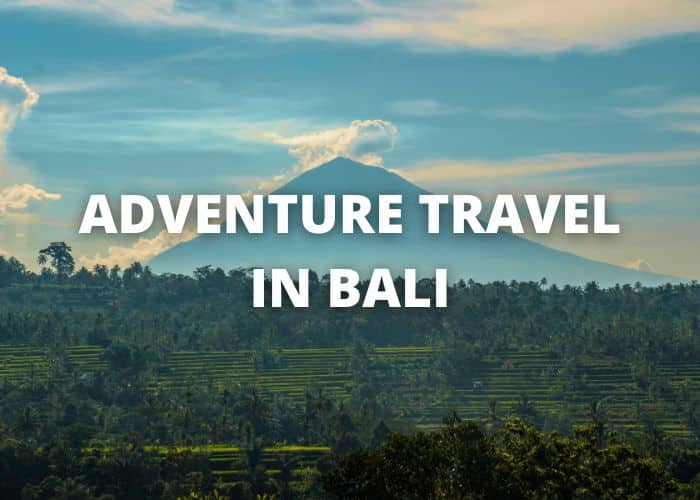
Kite Surfing
One of the best ways to enjoy the tropical weather in Bali is to take up the sport of kite surfing. While it’s not a new sport, kite surfing is catching on on the island’s many beaches. Kite surfing involves three people who use a kite to fly across the ocean. The activity can be a thrilling experience, and the wind can be quite strong.
If you’re an experienced kitesurfer, you can rent a kite at Sanur Beach. It’s one of the most popular spots in Bali. In fact, it’s the perfect place to start if you’re a beginner. If you don’t have your own kite, you’ll be able to rent one from local kite shops. But if you’re just a beginner, you’ll want to rent a kite at one of Sanur’s surf spots. This is also where you’ll learn how to fly a kite and control it.
If you’re looking for an adrenaline-rush-filled activity, kite surfing in Bali is for you. You’ll find a great variety of kite schools on the island, depending on the time of year and the winds. The best time of year for kite surfing in Bali is during the southwest monsoon season, when the winds are the strongest.
The best time to go kite surfing is from May to September. During this period, the wind is generally consistent and not too strong. However, you can still go kite surfing at other times of the year. However, in Bali, the wind is often light, so you will need to use a larger kite than you would if you were on a windy day. The recommended kite is a 12 to 15-metre one.
Canyon Tubing
If you’re looking for a unique and exciting water activity to do in Bali, canyon tubing is the activity for you. It is a great way to experience the beauty of the island while experiencing the adrenaline-rushing adventure of rafting. The course is suitable for experienced bikers as well as beginners.
The course consists of a two-hour canyon tubing adventure and a quad bike tour. It also includes safety and health measures. If you have to cancel, the company will give you a 50% refund. While tubing, you’ll experience a variety of beautiful landscapes, including a beautiful waterfall, a lush jungle, and stunning waterfalls.
Canyon tubing in Bali is similar to rafting, but there are no paddles. It takes place near Ubud, and the experience includes a life jacket and helmet. It costs USD90 per person. You’ll need a swimsuit, sport shoes, and extra clothing. You’ll also need to bring your voucher if you plan to participate.
If you’d like to combine canyon tubing with rafting, you can also book a full-day tour. This tour includes a buffet lunch and canyon tubing. Along the way, you’ll drive through rice fields and plantations, and you’ll also get to see traditional Balinese villages. Afterward, you’ll get dropped off at your hotel in Ubud.
Hiking
Bali is a province of Indonesia. It is located in the Lesser Sunda Islands east of Java and west of Lombok. It comprises the island of Bali and several small neighboring islands. The region is known for its natural beauty and has a long history of exploration and adventure.
There are countless hiking trails in Bali. Whether you’re looking for scenic landscapes or breathtaking waterfalls, there’s a hike for you. Hiking trails in Bali can take you to tucked-away temples and breathtaking waterfalls. Before embarking on a hiking adventure, it’s important to check out the best time to visit. To ensure the most enjoyable experience, hike during the drier months.
Whether you’re a beginner or a seasoned hiker, you’ll be rewarded with stunning scenery and unforgettable memories. The Muntigunung trek, for example, takes you to a remote village in the northern part of Bali. Guests can experience life as a local and learn about their daily challenges. As you hike through the jungle, you’ll encounter wildlife and learn about their culture. In addition, the trek ends at an iconic cave.
Hiking in Bali is the perfect combination of active and leisure activities. You’ll visit a traditional Hindu village and a volcanic area, and your expert guide will explain Balinese customs and traditions. Throughout the trek, you’ll enjoy the sights and sounds of the tropical rainforest and rice fields. Moreover, you’ll have a buffet lunch at a local restaurant.
Diving
Diving in Bali is possible all year round, but the best months to visit are June to September, when manta rays are most plentiful. The best visibility is found in April to June, when the sea is around 25 degrees Celsius. During the rainy season, however, the sea is a little bit rougher, but otherwise the water temperature is always safe for diving.
There are several options for diving in Bali, and you can choose from reef dives, wreck dives, or black sand dives. Most dive sites are rocky or sandy and gradually drop in depth until 120 feet. In order to protect your feet while diving, you’ll want to wear diving shoes or flippers.
In Pemuteran, a few dive sites are great for beginners. One of these sites is Secret Bay, which has good visibility and a wide variety of critters. Another great dive site is Menjangan Island, which is part of the West Bali National Park. This island is accessible only by boat and offers healthy corals and fish, as well as fewer tourists.
Besides diving, Bali has other attractions that can make your diving experience a memorable one. The island’s proximity to other islands makes it a popular place for scuba divers to extend their trips. The Gili Islands are just off the coast of Lombok, and you can take a speedboat from Amed to the Gili Islands in an hour.
Diving in Nusa Penida
Diving in Nusa Penida, Bali is a great way to experience the island’s diverse underwater world. The waters off the coast are warm and full of beautiful corals and fish. Some dive sites are easy to access from the shore, while others require a boat ride. While diving in Nusa Penida, you’ll encounter plenty of beautiful marine life, and you can combine scuba diving with snorkeling to experience an unforgettable underwater adventure.
Nusa Penida dive sites can have strong currents or calm waters. Strong currents can make diving in Nusa Penida a challenge, but you can usually anticipate these conditions by checking the tide tables. Strong currents can reach five knots and change direction without warning. Moreover, the currents can be cold, so you should always stay alert when you go diving in Nusa Penida.
One of the best dive sites in Nusa Penida is Manta Point. The waters are murky due to plankton, which attracts manta rays. The manta rays come in groups and stay in the waters for extended periods. A scuba diver can spend most of his dive watching these magnificent creatures.
Diving in Nusa Penida, Bali is a great way to explore the island’s marine life. You can see manta rays, eagle rays, and many other colorful marine life. You can also see moray eels and turtles. And of course, don’t forget the coral reefs!
Fly Fishing
If you are looking for a way to get the adrenaline pumping, Fly Fishing is the activity for you. It combines the fun of tubing with the thrill of high-flying. You’ll ride a raft designed to lift in the air when approaching high-speed waves. The raft is tied to a boat, and the driver pulls you over the waves and speeds up, sending you “flying.”
Fly Fishing is an exciting activity that is relatively new in Bali. It is an activity where you will need a professional guide to help you, as well as all the necessary equipment. The boat that you’ll be riding on is called a “fish” and can hold up to three people. It is a challenging sport but is safe thanks to special safety equipment.
The Fly Fish activity can be done on the water in several locations, including Tanjung Benoa Beach. The Fly Fish activity is offered by Bali Water Sports, and the team provides international safety equipment to protect passengers. The boat has several positions where passengers can ride, including holding onto a rope in the middle of the boat.
Fly Fishing is an activity that requires you to wear a life jacket and other safety equipment. There are also safety ropes attached to the fishing boat and handles to hold onto while flying. The boat will pull you toward the middle of the beach, where a guide will stand on top of the flying fish. The guide will balance you as you fish, and make sure you’re safe.
Adventure Travel
Types of Adventure Tourism
Various types of adventure tourism exist. Among them are zipline, mountaineering and soft adventure. The latter is a popular choice for tourists seeking new experiences. It can be a fun and exciting way to experience the world. While some of these activities may be challenging, they can also be extremely rewarding.
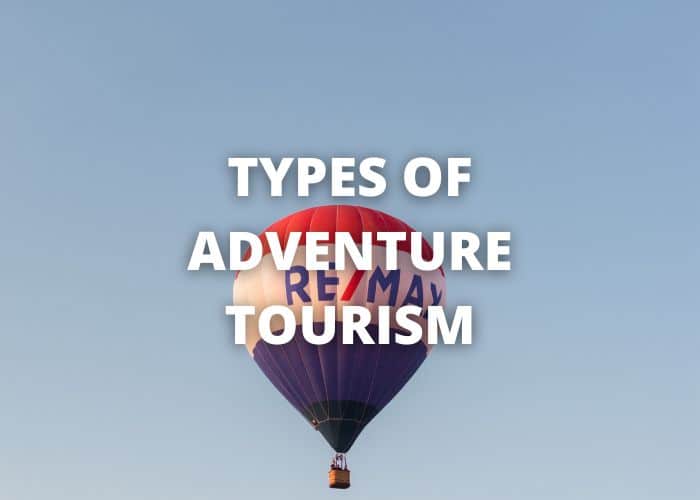
Soft adventure
Compared to hard adventure tourism, soft adventure tourism is much more accessible to a broader audience. It is less risky and requires fewer commitments. It is often led by guides, but you can opt to do it on your own as well. It also involves less physical exertion and less risk.
The rising popularity of soft adventure tourism in Asia is being driven by the younger generation. This group has less disposable income and is increasingly looking for unique experiences in foreign lands. A recent study by PATA predicts that outbound Chinese, Indian, and Malaysian travelers will be the most interested in soft adventure tourism. The rise in domestic tourism in China has triggered new product offerings, particularly soft adventure tourism.
In 2021, the 51-to-60 age segment is expected to account for the largest share of the adventure tourism market. Moreover, it is expected to witness a 16.6% CAGR. According to the World Tourism Organization, more than 85% of travelers in this age group get travel inspiration from social media, which impacts their decisions and often motivates them to travel. Therefore, this segment is anticipated to provide a substantial share of the adventure tourism market over the forecast period.
Soft adventure tourism refers to activities that require little or no previous experience. This type of tourism is aimed at those who are driven by their passion for adventure and want a break from the city life. Hard adventure tourism, on the other hand, involves riskier activities that require expert guidance and equipment. Many tourists have died while performing these activities, so it is important to follow the guidelines of your tour provider.
The key difference between hard and soft adventure tourism is the type of physical activity involved. In hard adventure tourism, tourists participate in activities with a higher risk of injury or death. The risks involved in soft adventure tourism are generally much lower than in hard adventure tourism, and there is no need to undergo intensive training or experience to participate in these activities. Usually, professional guides will lead you through these activities.
Mountaineering
Mountaineering is a form of adventure tourism, which involves climbing peaks. It requires a high level of experience and expertise and usually involves personal risk. This type of trip is typically performed in mountainous areas of the world, such as the Himalayas. The activities can range from easy, low-altitude climbs, such as Mount Kilimanjaro, to more demanding expeditions, such as those to the top of Mt. Everest.
Mountaineering is not for everyone. It requires a high level of fitness, athleticism, and preparation, as well as proper equipment and training. The physical activity also requires mental stamina. A clean bill of health is essential, because attempts to the highest peaks will push your body to its limit.
In order to experience a successful mountaineering trip, you must choose the right type of adventure for your skill level and personal preferences. Research on mountaineering has shown that mountain hikers feel positive effects from the activity because they explore new landscapes and experience new adventures. These positive effects are both the result of individual contributions and the performance of the environment.
Mountaineering has a long history in India. It began in the 1940s, when Doon School teachers took students to the Arwa Valley above Badrinath. In the 1950s, Jawaharlal Nehru encouraged mountaineering in Independent India. In 1951, Indian teams reached the summit of Trishul, the first 7000-metre mountain in India. A few years later, the Himalayan Mountaineering Institute was founded in Darjeeling and the first Indian teams climbed the Kamet mountain in the Garhwal Himalayas.
Depending on the type of adventure activity, adventure tourism can be hard or soft. Hard adventure involves high risk activities, which require extensive experience and advanced skills. Popular types of hard adventure include climbing, trekking, and caving. Hard adventure activities require a guide with professional experience to ensure safety and security. Some activities, such as mountaineering, are extremely dangerous and can be deadly.
Spelunking
Spelunking is a type of underground exploration that involves the use of a hard hat or helmet. The activity is often conducted in complete darkness so it is important to be properly protected. It is also advisable to carry a small first aid kit, in case of an injury. A few provisions can also be carried to keep you hydrated and energetic.
A cave can be a very exciting place to explore. The thrill of exploring a mysterious cave is incomparable. Spelunking, or caving, is a popular adventure tourism activity. While caving is an intense form of recreation, spelunking is a leisurely way to explore caves.
Depending on the level of expertise and fitness of the participant, spelunking can involve a range of activities. These can range from crawling through narrow passages to dangling from ropes. Before diving into a cave, it is important to check the local government’s requirements and speak with the cave association to obtain a permit.
Spelunking is a recreational activity that involves crawling through caves. Caves have been used for shelter for centuries and are now being explored for fun. The sport has gained in popularity because of its sense of adventure. Most caving clubs are affiliated with the Speleological Society, which provides education on cave safety.
Some caves have a rich history and are home to many fascinating treasures. One of these places is the Natural Bridge Caverns, discovered in 1960 by four college-aged spelunkers. This cave is located under a 60-foot limestone bridge connecting the towns of San Antonio and New Braunfels. Visitors can explore this attraction on a guided adventure tour. However, it’s not for the faint of heart! At 230 feet below the surface, the cave is a challenging adventure for the brave. There are natural sculptures and formations throughout the cave. Other caves include Lake Cave, which has miles of crystal caves and glassy underground lakes.
Zipline
Adventure tourism includes a wide variety of activities. Some activities are more challenging than others. Zip lines, for example, are a fast and furious way to travel. They are an exciting way to experience adventure and can be incorporated into a resort package. However, people who are afraid of heights should probably avoid zip lines.
Adventure tourism has a long history. It dates back to the earliest times when humans started traveling. Legendary figures such as Marco Polo, Captain James Cook, and Sir Ernest Shackle ton all took part in expeditions for a variety of reasons. The word “trek” is derived from Afrikaans, which means “long, arduous journey.”
Another type of adventure tourism is family friendly. These trips are designed to be fun for a broad range of ages, and are ideal for families. Depending on the type of activity, these trips can be either extreme or relaxing. These types of tours are popular in many countries and can be tailored to a variety of interests.
Some adventure tourists focus on hard adventure activities while others prefer soft adventure. They typically spend more money on the activity of their choice and are prepared to take on significant risks. Hard adventure activities generally require higher levels of physical fitness and specialized tour operators. The thrill of the experience is often derived from the self-satisfaction experienced after overcoming the challenges.
In addition to the different types of adventure travel, many people enjoy the cultural diversity that is unique to each destination. Adventure tourism activities are often centered around small-scale tour operators. These operators are often more trustworthy and have loyal customers. As a result, they are more adept at communicating destination safety to tourists. Most adventure tourism suppliers use small-scale accommodations for their guests, and this means they can provide better accommodations and distances than larger operators.
Soft adventure activities, on the other hand, do not involve risky activities and require less skill. Often led by professional guides, these activities do not require long-term commitment.
-

 South Korea3 years ago
South Korea3 years agoBest Volunteer Programs in South Korea
-

 Volontariat à l'étranger3 years ago
Volontariat à l'étranger3 years agoVolontariat Thaïlande
-

 Freiwilligenarbeit im Ausland3 years ago
Freiwilligenarbeit im Ausland3 years agoFreiwilligenarbeit Thailand
-

 Vrijwilligerswerk3 years ago
Vrijwilligerswerk3 years agoVrijwilligerswerk Thailand
-

 Adventure Travel2 years ago
Adventure Travel2 years agoTypes of Adventure Tourism
-
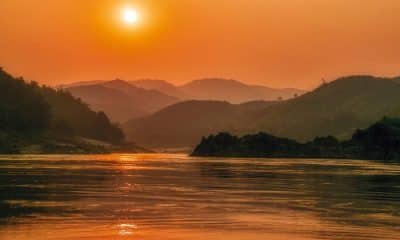
 Freiwilligenarbeit im Ausland3 years ago
Freiwilligenarbeit im Ausland3 years agoFreiwilligenarbeit Laos
-

 Vrijwilligerswerk3 years ago
Vrijwilligerswerk3 years agoVrijwilligerswerk Laos
-

 2 years ago
2 years agoTop 10 Best Cities to Live in the World (2023) World’s Best Places to Live






















